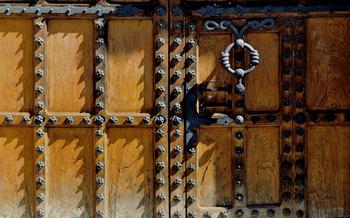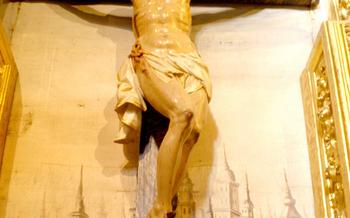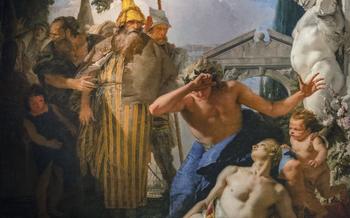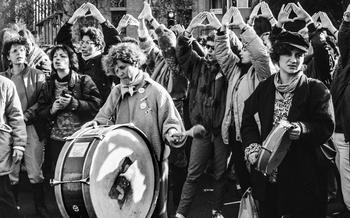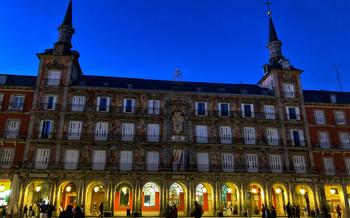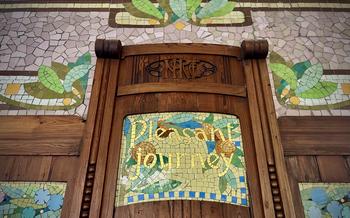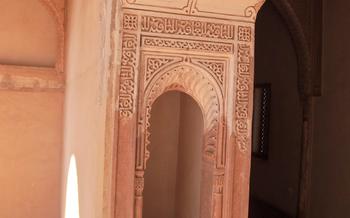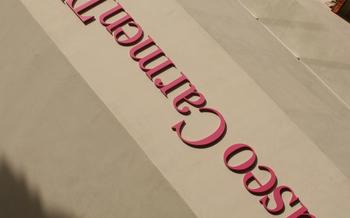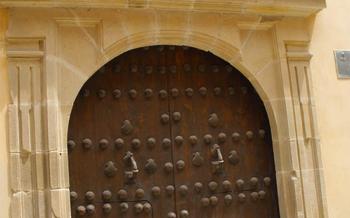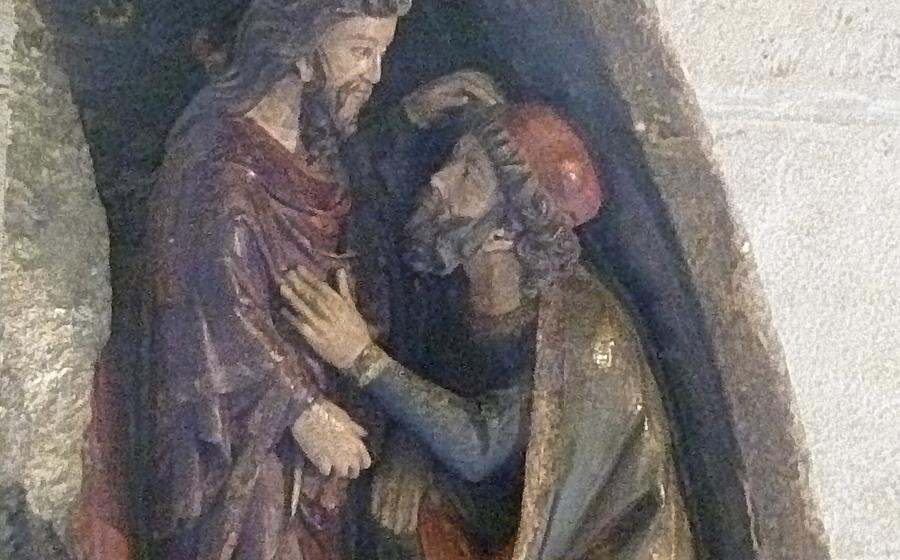
Museo de Farmacia
- Museo de Farmacia
- Location
- Hours of Operation
- Admission Fees
- Exhibits
- Guided Tours
- Educational Programs
- Family-Friendly Activities
- Accessibility
- Food and Beverage
- Gift Shop
- Photography
- Events
- Research Facilities
Museo de Farmacia
The Museo de Farmacia, housed in a beautiful 18th-century building, is a treasure trove of pharmaceutical history. The museum's collection includes over 5,000 artifacts, including antique mortars and pestles, alchemical equipment, and a vast collection of medicinal plants. Visitors can learn about the history of pharmacy, from its ancient roots to its modern-day applications.
The museum's collection is divided into several sections, including a section on the history of pharmacy, a section on the development of drugs, and a section on the role of pharmacy in society. The museum also has a section dedicated to the work of local pharmacists, including a display of their tools and equipment. The Museo de Farmacia is a fascinating and educational experience for anyone interested in the history of medicine. Guided tours are available, and the museum also offers educational programs for groups and families.
Location
The Museo de Farmacia is strategically located in the heart of Burgos, within walking distance from numerous historical landmarks and attractions. The museum's address is Calle Victoria 5, 09003 Burgos, Spain. Visitors can conveniently reach the museum via public transportation, as several bus lines stop nearby. The museum is easily accessible by car, with ample street parking available in the surrounding area. Additionally, the museum is wheelchair accessible, ensuring that visitors with disabilities can fully enjoy their visit.
Hours of Operation
The Museo de Farmacia follows regular hours of operation for the general public, but it also offers extended hours for special events and holiday periods. The standard opening hours are from Tuesday to Saturday, between 10:00 AM and 2:00 PM, with a break from 2:00 PM to 4:00 PM and then reopening until 6:00 PM. On Sundays and Mondays, the museum remains closed.
During holiday periods, such as Christmas, Easter, and summer, the museum may extend its hours or offer special programs and activities. It is advisable to check the museum's website or contact them directly for specific holiday hours. The website also provides information on any temporary closures or changes in the schedule.
Additionally, the museum offers guided tours for groups upon reservation. These tours typically last around an hour and provide a deeper insight into the history of pharmacy and the collection of artifacts. It is recommended to book a guided tour in advance to avoid disappointment, especially during peak tourist season.
Admission Fees
The Museo de Farmacia offers a variety of admission fees to accommodate visitors of all ages and budgets. General admission for adults is €5, while children and students can enter for a discounted rate of €Family rates are also available, with a maximum of two adults and three children admitted for €
Free admission is offered to children under 6 years old, as well as to visitors with disabilities and their companions. Visitors can also take advantage of free admission on the first Sunday of each month.
Group rates are available for groups of 10 or more people, with a discounted rate of €4 per person. Groups must be booked in advance.
Exhibits
The Museo de Farmacia houses a remarkable collection of artifacts that showcase the evolution of pharmacy and medicine throughout history. The permanent exhibits include a vast array of pharmaceutical tools, equipment, and instruments, such as ancient mortars and pestles, alchemical distilling apparatus, and intricate glass-blown laboratory ware. Visitors can marvel at the intricate designs and craftsmanship of these objects, which provide a glimpse into the ingenuity and expertise of past pharmacists and scientists. The museum also features an extensive collection of medicinal plants, meticulously preserved and displayed to illustrate their therapeutic properties and historical significance.
Temporary exhibits and special exhibitions delving into specific aspects of pharmacy and medicine are regularly organized to complement the permanent collection. These exhibits often feature rare and seldom-seen artifacts, such as ancient medical manuscripts, historical pharmaceutical advertisements, and innovative medical technologies. Interactive exhibits, designed to engage visitors of all ages, offer hands-on experiences and educational activities that illuminate various pharmaceutical concepts and processes.
Guided Tours
Guided tours of the Museo de Farmacia are available to groups of all ages and sizes. Tours can be scheduled in advance by contacting the museum directly. The cost of a guided tour is typically based on the size of the group and the type of tour desired. Tours are offered in a variety of languages, including English, Spanish, French, and German. Reservations for guided tours are highly recommended as they fill up quickly.
Educational Programs
The Museo de Farmacia offers a variety of educational programs for students of all ages. These programs are designed to teach visitors about the history of pharmacy, the science of drug discovery, and the importance of public health.
Workshops are offered on a variety of topics, such as making your own medicines, learning about the history of pharmacy, and exploring the science of drug discovery.
Lectures are given by experts in the field of pharmacy and are open to the public.
Demonstrations are given by museum staff and volunteers and show visitors how medicines were made and used in the past.
Field trips are available for groups of students and can be customized to fit the needs of the group.
Family-Friendly Activities
The Museo de Farmacia is a great place for families to visit. There are a number of family-friendly activities available, including:
- Children's programs: The museum offers a variety of children's programs, including guided tours, workshops, and demonstrations. These programs are designed to teach children about the history of pharmacy and the science of medicine in a fun and engaging way.
- Family discounts: The museum offers a family discount for up to two adults and two children.
- Stroller accessibility: The museum is stroller accessible, making it easy for families with young children to visit.
- Diaper-changing facilities: The museum has diaper-changing facilities available in the restrooms.
Accessibility
The Museo de Farmacia is committed to providing an inclusive environment for all visitors, regardless of ability. The museum is wheelchair accessible, with ramps and elevators throughout the building. Braille signage is available for all exhibits, and audio guides and assisted listening devices are available upon request. The museum also offers a variety of programs and services for visitors with disabilities, including guided tours, workshops, and lectures.
Wheelchair Accessibility
The Museo de Farmacia is fully wheelchair accessible, with ramps and elevators throughout the building. All exhibits are accessible to wheelchair users, and there are accessible restrooms and water fountains available.
Braille Signage
Braille signage is available for all exhibits, making it easier for visitors with visual impairments to navigate the museum. The signage includes information about the exhibits, as well as directions and safety information.
Audio Guides and Assisted Listening Devices
Audio guides and assisted listening devices are available upon request for visitors with hearing impairments. The audio guides provide a detailed description of the exhibits, and the assisted listening devices amplify the sound of the museum's audio system.
Programs and Services for Visitors with Disabilities
The Museo de Farmacia offers a variety of programs and services for visitors with disabilities, including guided tours, workshops, and lectures. These programs are designed to make the museum accessible and enjoyable for all visitors, regardless of ability.
Food and Beverage
The Museo de Farmacia does not have an on-site café or restaurant, but there are several dining options nearby. Visitors can grab a quick bite to eat at one of the many cafés, bars, or restaurants in the surrounding area. There are several restaurants within a short walk of the museum, offering a variety of cuisines to suit all tastes and budgets. Picnics are also permitted in the Plaza de Santo Domingo, which is just a few steps away from the museum. There are also vending machines available in the museum lobby for those who prefer a quick and easy snack.
Gift Shop
The Museo de Farmacia houses a well-stocked gift shop that offers a wide variety of souvenirs, books, and gifts related to the history of pharmacy, medicine, and science. Visitors can find a diverse selection of items, including:
- Museum merchandise: A variety of items featuring the museum's logo, such as t-shirts, mugs, magnets, and postcards.
- Books: A wide range of books on the history of pharmacy, medicine, and science, including both scholarly works and popular titles.
- Gifts: Unique and thoughtful gifts for any occasion, such as jewelry, home décor, and accessories inspired by the museum's collection.
- Souvenirs: A selection of souvenirs to commemorate your visit to the Museo de Farmacia, such as replicas of historical artifacts, traditional Spanish crafts, and local delicacies.
The gift shop is located in the museum's lobby and is open during the same hours as the museum. Visitors are encouraged to browse the shop and find a special memento of their visit to the Museo de Farmacia.
Photography
The Museo de Farmacia has a generally permissive photography policy, allowing visitors to capture the beauty and uniqueness of the exhibits. However, there are a few guidelines to ensure the preservation of the artifacts and the comfort of other visitors.
Flash photography is strictly prohibited, as the intense light can damage the delicate items on display. Visitors should also avoid using tripods or monopods, as these can obstruct the pathways and interfere with the viewing experience of others. Selfie sticks are permitted, but should be used with caution to avoid accidentally knocking over any displays or other visitors.
The museum encourages visitors to share their photos on social media, using the hashtag #MuseoDeFarmacia. This helps to promote the museum and its collection to a wider audience.
Events
The Museo de Farmacia hosts a variety of events throughout the year, including lectures, workshops, demonstrations, and special exhibitions.
Lectures are typically given by experts in the field of pharmacy and cover a wide range of topics, from the history of medicine to the latest advances in drug development.
Workshops offer participants the opportunity to learn new skills and techniques, such as how to make their own herbal remedies or how to identify different types of plants.
Demonstrations allow visitors to see how pharmacists used to work and how they made medicines in the past.
Special exhibitions are often held in conjunction with a particular theme or event, and they typically feature a selection of artifacts from the museum's collection.
Research Facilities
The Museo de Farmacia houses an extensive library, archives, and database, which are invaluable resources for researchers in the field of pharmacy. The library contains over 12,000 volumes, including rare books and manuscripts dating back to the 16th century. The archives house a vast collection of documents, photographs, and artifacts related to the history of pharmacy in Spain. The database provides access to a wealth of information on pharmaceutical products, patents, and clinical trials.
The Museo de Farmacia also offers a number of research grants to support scholars working in the field of pharmacy. These grants are awarded on a competitive basis to researchers from all over the world.
Researchers who are interested in using the Museo de Farmacia's research facilities should contact the museum in advance to make arrangements. The museum staff is available to assist researchers with their research needs and to provide guidance on the use of the library, archives, and database.
Insider Tip:
If you are a researcher interested in the history of pharmacy, be sure to visit the Museo de Farmacia's library and archives. The collection is extensive and contains many rare and valuable items.
